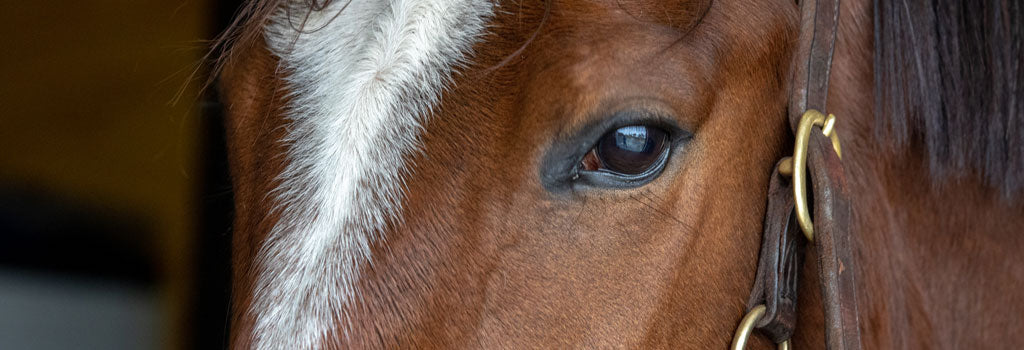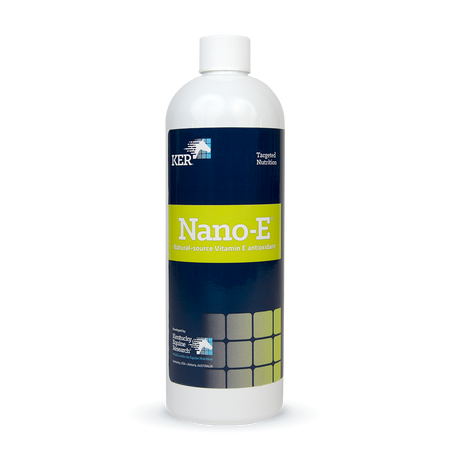
NEUROLOGIC DISEASE
NEUROLOGIC DISEASE
The main goals of feeding horses with neurologic disease are to supplement vitamin E and ensure that horses continue eating a good-quality, balanced diet. Many horses with neurologic disease will have impaired balance and gait abnormalities that will prevent them from being turned out. If safe for the horse and handlers, some hand-grazing allows access to fresh grass and serves as physical therapy for the horse.
Horses with neurologic disease often have trouble balancing, especially when they lower their heads. Feeding hay in hay nets or placing feed on top of a straw bale makes it easier for neurologic horses to eat. These horses are sometimes reluctant to move around their stalls, so it is important to keep hay, feed, and water near each other if the horse has difficulty moving around.
Important rule outs for young horses with gait abnormalities include cervical vertebral malformation (wobblers), equine protozoal myeloencephalitis (EPM), equine degenerative myelopathy (EDM), and central nervous system or spinal trauma. Diagnostic testing can include neurologic examination, radiographs of the vertebrae of the neck, spinal tap, and measurement of vitamin E in the blood and diet.
Equine protozoal myeloencephalitis (EPM) is an infectious neurological disease that affects horses. First described almost 40 years ago, the disease is one of the most commonly diagnosed equine neurological disorders in the
Treatment of EPM with sulfonamide antibiotics and pyrimethamine is still an effective and often prescribed therapy. These drugs may cause gastrointestinal upset, so it is very important to keep the horse eating and potentially supplement with probiotics to reduce the chances of developing diarrhea. These drugs work because they interfere with folate metabolism in protozoa. Folate is eventually converted to active tetrahydrofolate, which is important for DNA synthesis and in rapidly growing tissues. Horses absorb folate from their diet, whereas microorganisms must produce their own. Horses eating fresh forages have higher serum folate concentrations than horses fed other feedstuffs. Folic acid supplementation for horses with EPM being treated with sulfonamide antibiotics and pyrimethamine has been shown to be detrimental and may cause clinical signs of folate deficiency and lead to birth defects in foals from treated mares. It is believed that supplemental folic acid competes for absorption with active tetrahydrofolate and actually creates or worsens a folate deficiency.
Equine motor neuron disease (EMND) is a progressive, debilitating, usually fatal neurological disease of horses. It affects lower motor neurons, nerves that supply the direct neurological input into all muscles. Without these, the associated muscles atrophy, resulting in the remarkable weakness and weight loss characteristic of this disease. Researchers have described an association between vitamin E deficiency and EMND.
Horses with EMND are nearly always housed in boarding stables with minimal or no turnout or turnout only on drylots with no grass. Affected horses generally receive large amounts of pelleted or sweet feed, no vitamin E supplements, no pasture, and poor-quality hay (usually described as light green, yellow, brown, or even sun-bleached grass hay with no alfalfa).
The only known treatment for EMND is supplementation with vitamin E. Good-quality hay and/or pasture should also be provided if possible. If the horse responds to therapy, it typically takes a minimum of 3-6 weeks for observable improvement in trembling, followed eventually by increased weight and strength. Even with vitamin E supplementation, the prognosis for affected horses remains guarded.
Prevent EMND through a proper balanced diet with less confinement and greater exposure to green pasture. Daily vitamin E supplementation is recommended whenever diet or management considerations might provide insufficient vitamin E.
Equine degenerative myelopathy (EDM) is a hereditary neurologic disease exacerbated by dietary vitamin E deficiency. In a field study, foals affected with EDM had significantly lower plasma alpha-tocopherol concentrations than foals that were sired by an unaffected stallion.
Neuroaxonal dystrophy (NAD) is a degenerative central nervous system disease of horses, humans, and other animals. Horses affected with NAD usually appear dull or depressed with weakness and mild to severe gait abnormalities (ataxia) that affect all four limbs, though the hind limbs are usually more severely affected. Clinical signs of NAD are usually first observed in young horses (two years of age or less). Neuroaxonal dystrophy is believed to be a heritable trait when pedigrees were analyzed in Morgans, Appaloosas, and Quarter Horses.
Neuroaxonal dystrophy is similar to equine degenerative myelopathy (EDM). Both diseases cause degenerative changes in the central nervous system. Differences between NAD and EDM depend on what specific areas of the central nervous system are affected. Vitamin E deficiency is associated with both NAD and EDM. Horses affected with NAD on a farm in
Nutritional Support for Horses with Neurological Disease
Several equine neurologic diseases, such as NAD, EDM, and EMND, have been shown to be caused by vitamin E deficiency or to improve with vitamin E supplementation. Many veterinarians prescribe vitamin E supplementation for the treatment of equine neurologic diseases because of its neuroprotective effects. The usual recommended dose of micellized natural vitamin E (water-soluble d-alpha-tocopherol) for horses with neurologic disease is 5,000-10,000 IU by mouth every 24 hours. This is approximately 10-20 times the dietary requirement for an 1100-pound (500-kg) horse.
Nano-E® Nanodispersed, liquid natural-source vitamin E supplement. Nano-E provides a highly bioavailable natural (d-α-tocopherol), water soluble source of vitamin E to horses through a unique delivery system. Recommended for horses that spend a significant portion of their time in stalls or otherwise confined, performance horses, horses whose forage intake is largely from hay rather than pasture, those with neurological problems, undergoing stressful events and convalescent horses.

